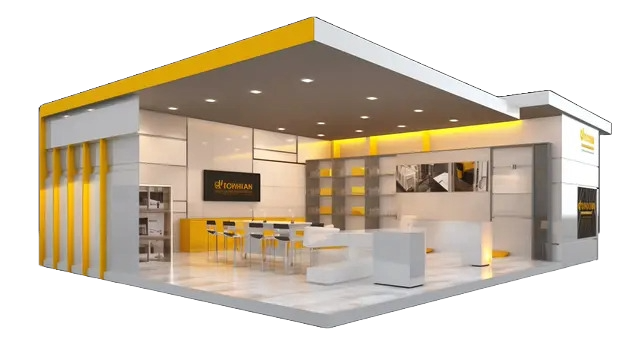Munich Trade Fair Stand Setup Tips & Insights
- Elisa Johnson
- Jul 4
- 3 min read

Munich, known for its vibrant economy and international appeal, hosts a wide array of trade fairs throughout the year. From technology and engineering to food and fashion, the city’s trade shows draw global participants. Successfully setting up a stand at these fairs requires strategic planning, a deep understanding of exhibition goals, and seamless execution. One of the first steps in preparing for any Munich trade fair is collaborating with an experienced Exhibition Stand Builder in Munich who understands the layout and logistics of venues like Messe München. Proper guidance from such professionals ensures that exhibitors follow technical regulations while creating a visually impactful and functional setup.
Understanding Venue Requirements
Every trade fair venue in Munich comes with its own set of technical requirements and logistical frameworks. Messe München, one of Europe's largest exhibition venues, provides clear regulations regarding booth dimensions, construction materials, ceiling heights, electrical installations, and safety standards. Exhibitors must study these requirements in advance and factor them into the initial design process. Failing to meet venue guidelines can lead to penalties or last-minute redesigns that may hinder presentation quality.
Design for Visibility and Functionality
A successful trade fair stand in Munich must do more than just look attractive — it should communicate the brand’s core message instantly. This is achieved by integrating brand colors, logos, and messages into the structure while ensuring the design remains open, inviting, and easy to navigate. Clear sightlines, strategic lighting, and properly placed banners can help draw visitors in, while functional layouts ensure the booth accommodates meetings, product displays, and demonstrations without crowding the space.
Focus on Visitor Engagement
Munich trade fairs draw international attendees with a wide range of interests. Engaging this varied audience requires interactive features like touchscreens, live demos, or VR elements that showcase a brand’s offerings in action. Additionally, trained booth staff should be prepared to communicate effectively with both local and international guests. Offering multilingual materials and real-time product walkthroughs often leaves a lasting impression and increases chances of post-event communication.
Timing and Logistics
Early planning is crucial when preparing for trade shows in Munich. Booth construction, shipping materials, scheduling staff, and on-site approvals must be coordinated well in advance. The buildup period before major fairs like BAU or ISPO may experience high demand for transport, warehousing, and labor, which can delay setup. Collaborating with local professionals, including an Exhibition Stand Builder in Munich, can streamline these logistics, ensuring timely delivery and installation of the stand.
Sustainability in Stand Design
Sustainability has become a central theme at many Munich trade fairs. Exhibitors are increasingly choosing eco-friendly materials, reusable components, and energy-efficient lighting. Modular designs that can be dismantled and reused at multiple events are gaining popularity, both for their environmental benefits and cost-effectiveness. Demonstrating a commitment to sustainability not only aligns with global best practices but also resonates well with Munich’s environmentally-conscious audience.
Compliance and Safety Protocols
All trade fair stands in Munich must comply with local fire safety, electrical, and structural regulations. This includes using flame-retardant materials, proper cable management, and maintaining accessible emergency exits. Additionally, depending on the fair, health and hygiene measures such as hand sanitization points or ventilation systems may be mandatory. Ensuring that your stand meets these requirements is essential to avoiding interruptions or shutdowns during the event.
Post-Event Strategy
The trade fair experience doesn’t end when the event closes. Post-show follow-up is vital to turning leads into clients. Properly set up stands often include data collection tools such as QR code scanners or digital sign-up forms that help gather visitor information efficiently. After the fair, this data should be sorted and used to send personalized messages or schedule follow-up meetings. Debriefing with the stand design team can also provide insights for improvements at future events.
Conclusion
Trade fairs in Munich offer unmatched opportunities for networking, brand positioning, and business growth. However, setting up a successful exhibition stand in this competitive environment requires careful planning, compliance with regulations, and effective engagement strategies. Understanding the unique characteristics of each venue, aligning design with brand identity, and managing logistics with precision all play a role in achieving success. As many exhibitors seek support from experienced professionals, working with a reliable Exhibition Stand Builder in Germany ensures that every aspect—from design to dismantling—meets the highest standards. With a thoughtful approach and attention to detail, exhibitors can fully capitalize on Munich’s thriving trade fair landscape.




Comments